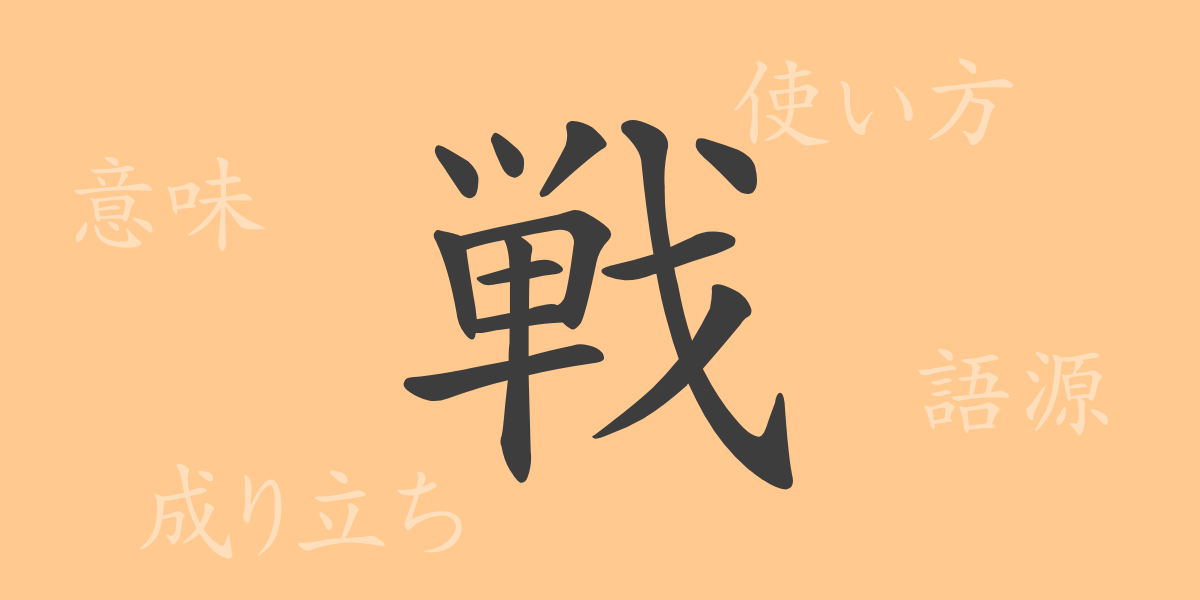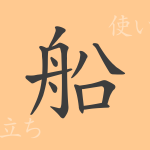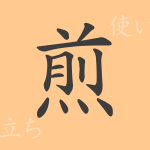In Japanese culture and language, the kanji “戦” (せん) holds a deep significance, symbolizing various historical events and deeply intertwined with everyday life. This article explores the character “戦,” delving into its historical background, meanings, and applications, along with phrases and idioms associated with it, providing insight into its profound cultural role.
Origins of 戦
The kanji “戦” originates from ancient Chinese oracle bone script, initially representing chariots, a primary instrument in warfare during ancient times. This evolution reflects the transition from a specific utility to representing broader concepts of war and conflict.
Meaning and Usage of 戦
The character “戦” is commonly used to denote war, competition, and conflict. It is also metaphorically applied to describe situations that require intense effort or struggle, emphasizing strength and tension in various contexts.
Pronunciation, Stroke Count, and Radical of 戦
The kanji “戦” has multiple readings and plays various roles in Japanese language:
- Pronunciation: The On’yomi (Sino-Japanese reading) is “セン” (Sen), and the Kun’yomi (native Japanese readings) include “いくさ” (ikusa) and “おののく” (ononoku).
- Stroke Count: “戦” consists of 13 strokes.
- Radical: Its radical is 戈 (ほこづくり – spear).
Phrases, Idioms, and Proverbs Involving 戦
There are numerous idioms and proverbs that include “戦,” each carrying a unique meaning and reflecting the intense imagery associated with the character:
- 戦勝 (せんしょう) – Victory in battle.
- 戦慄 (せんりつ) – To tremble with fear.
Conclusion on 戦
The kanji “戦” has influenced both ancient and modern cultures, symbolizing not only actual warfare and competition but also the daily struggles and challenges we face. Through “戦,” we are reminded of the importance of courage and effort, gaining the strength to move forward. This character enriches our language with its depth and versatility, echoing through various expressions in Japanese.

























